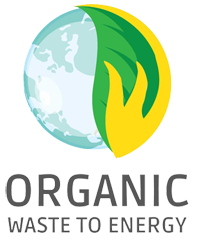The continuing use of fossil fuels and the effect of greenhouse gases (GHGs) on the environment have initiated research efforts into the production of alternative fuels from bioresources. The amount of GHG emissions in the atmosphere is rising, with carbon dioxide (CO2) being the main contributor. In addition, the global energy demand is increasing rapidly, with approximately 88% of the energy produced at the present time being based on fossil fuels [1], [2]. Moreover, the security of the energy supply is a crucial challenge because most natural energy resources (i.e., oil and gas reserves) are found in politically unstable regions. In this context, biogas from waste and residues can play a critical role in the energy future. Biogas is a multilateral renewable energy source that can replace conventional fuels to produce heat and power; it can also be used as gaseous fuel in automotive applications. Biomethane (upgraded biogas) can also substitute for natural gas in chemicals production. Recent evaluations indicate that biogas produced via anaerobic digestion (AD) provides significant advantages over other forms of bioenergy because AD is an energy-efficient and environmentally friendly technology [3], [4]. In comparison with fossil fuels, AD technology can reduce GHG emissions by utilizing locally available sources. In addition, the byproduct of this technology, called digestate, is a high-value fertilizer for crop cultivation and can replace common mineral fertilizers. In Europe, the production of biogas reached 1.35 × 107 t in 2014 [5]. Germany is the pioneer country in global biogas production, with approximately 25% installed capacity due to the strong development of agricultural biogas plants on farms. At the end of 2014, more than 8000 agricultural biogas production units were in operation in Germany [6]. Several countries have already become involved in the development of new pathways for biogas production from biomass and biowaste. Many European countries have established favorable conditions for electricity production from biogas. It is remarkable to note that the agro-biomass available for AD is as high as 1.5 × 109 t in Europe [7]. The United States, China, and India are also investing in alternative technologies for biogas production from cellulosic resources, and are likely future producers [8], [9]. Although biogas (and/or biomethane) based on waste is a promising substitution for, or contribution to, the natural gas network, the amount produced is limited in comparison with the annual global consumption. There is no clear answer regarding which feedstock is most appropriate for the biogas economy. In general, carbohydrates, fats, and proteins can be used in many applications. The necessity for global sustainable waste management has led to research interest in alternative fuels based on agro-waste and biowaste [10], [11]. This study discusses recent trends in biogas production and provides a summary of the current problems and barriers affecting different biogas production pathways. It also analyzes potential issues and trends in biotechnological conversion performance.1. Introduction
Source & read more: https://www.sciencedirect.com

